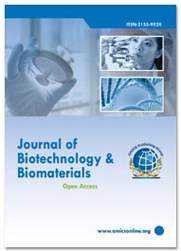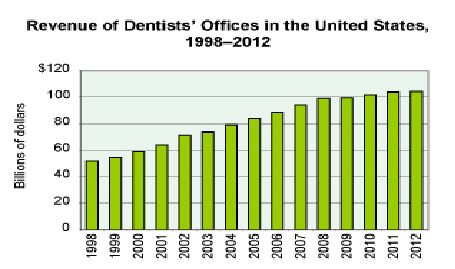Theme: Emerging Technologies and Scientific Advancements in Biomaterials Engineering
Biomaterials 2017
Conference series LLC takes immense pleasure & feel honored in inviting the contributors across the globe to attend ‘2nd Annual Conference & Expo on Biomaterials (Biomaterials 2017) during March 27-28, 2017 at Madrid, Spain which includes prompt keynote presentations, Oral talks, Poster presentations and Exhibitions.
Conference will be organized around the theme: 'Emerging Technologies and Scientific Advancements in Biomaterials Engineering'
The scientific event offers a best platform with its well organized scientific program to the audience which includes interactive panel discussions, keynote lectures, plenary talks and poster sessions on the topics like Advanced Biomaterials, Polymer Biomaterials, Dental Biomaterials, Properties of Biomaterials, Biomaterials Applications, Biomaterials Companies and Market Analysis, Biomaterials and Nanotechnology, Biomaterials Engineering, Synthesis and Characterization of Biomaterials, Tissue Engineering and Regenerative Medicine, Use in Therapeutic and Investigative Delivery, Biomaterials in Delivery Systems, Biomaterials in Biological Engineering, Biodegradable Biomaterials, Utility Based Biomaterials, Scientific Performance of Biomaterials and 3D Printing of Biomaterials
ConferenceSeries Ltd organizes a conference series of 3000+ Global Events with over 600+ Conferences, 1200+ Symposiums and 1200+ Workshops in USA, Europe & Asia with support from 1000 more scientific societies and publishes 700+ Open access journals which contains over 30000 eminent personalities, reputed scientists as editorial board members.
We are confident that the biomaterials conference series that has started with "Biomaterials 2016" will gain prodigious and consistent success in future.
Why Should I Attend?
Biomaterials 2017 conference acts as a platform for bridging the gap between Academia and Industry through discussion on novel research methods in Biomaterials research.
The conference gives best opportunity for meeting with Industrial experts, Academic speakers, Pharmaceutical Companies, Decision-makers, interacting and defining novel prospects in Biomaterials business. It helps in dynamically adding value to biomedical, pharmaceutical, R&D businesses. Novel approaches and applications about biomaterials like the gene/drug delivery systems development and industrializing insights & gain the latest technologies about novel biomaterials and bionanomaterials.
It emphasizes on novel strategies for biomedical applications and latest updates to drive your market share accordingly. Learn on the applications of novel biomaterials and other alternatives for treating major diseases to progress the materials portfolio industrialization pathways.
Biomaterials as a field has seen steady growth over its approximately half century of existence and uses ideas from medicine, biology, chemistry, materials science and engineering. There is also a powerful human side to biomaterials that considers ethics, law and the health care delivery system. The global market for biomaterials is estimated at $44.0 billion in 2012 and is poised to grow at a CAGR of 15% from 2012 to 2017 to reach $88.4 billion by 2017. The biomaterial polymers market is expected to show the highest growth at a CAGR of 22.1% (2012-2017) due to tremendous ongoing research for the development of biodegradable and bio-compatible polymeric biomaterial and its use in a wide range of applications.
The global market for implantable biomaterials was worth nearly $75.1 billion in 2013. This market is expected to grow at a compound annual growth rate (CAGR) of 6.7% between 2014 and 2019 resulting in $79.1 billion in 2014 and $109.5 billion global market in 2019.
Target Audience:
- Biomedical engineering, Materials Science and Nano Science Students, Scientists
- Biomaterials Researchers
- Biomedical engineering, Materials Science and Nano Science Faculty
- Medical Colleges
- Biomedical engineering, Materials Science and Nanomaterials Associations and Societies
- Biomedical Business Entrepreneurs
- 3D Printing companies
- Medical Devices manufacturing Companies
- Companies related to Biodegradable materials industry
Come and be a part of it !!!
ConferenceSeries Ltd invites all the participants across the globe to attend the 2nd Annual Conference and Expo on Biomaterials (Biomaterials-2017) during March 27-28, 2017 Madrid, Spain.
Theme of the conference is to emerge Technologies and Scientific Advancements in Biomaterials Engineering with an objective to encourage young minds and their research abilities by providing an opportunity to meet the experts in the field of Materials Science & Tissue Engineering .Biomaterials events are designed to explore various applications in different fields.
ConferenceSeries Ltd organizes a conference series of 3000+ Global Events with over 600+ Conferences, 1200+ Symposiums and 1200+ Workshops in USA, Europe & Asia with support from 1000 more scientific societies and publishes 700+ Open access journals which contains over 30000 eminent personalities, reputed scientists as editorial board members.
Track 1: Advanced Biomaterials
Biomaterials are the non-drug substances which are designed to interact with the biological system either as a part of medical device or to replace or repair any damaged organs or tissues. Biomaterials can be derived either naturally or synthetically. Natural Biomaterials are silk, gelatin, etc. while the Synthetic ones are the various polymers. Bioceramics like Alumina, Bioglass, Zirconia are used to repair damaged portions of musculoskeletal system and also used in dental and orthopaedic fields. Biocomposites are formed by using resin and natural fibres. It can be non wood natural fibres (rice, wheat, coconut, etc.) or wood fibres (magazines, soft and hard woods). Metals are mainly a choice of biomaterials in fields of dental, orthopaedic, cardiac implants. As metals can lead to wear, corrosion, so surface coating and modification of metals are necessary for medical applications.
Conferences Related to Advanced Biomaterials:
8th International Conference on Materials Science and Engineering, May 29-31, 2017 Osaka, Japan; 9th Materials Science and Engineering Congress, June 12-14, 2017 Rome, Italy; 3rd International Conference on Ceramics and Composite Materials June 29-30, 2017 Madrid, Spain; 4th Biopolymers Congress , September 7-9, 2017 Paris, France; 2nd Polymer Science and Engineering Congress May 15-17, 2017 Valencia, Spain; 19th International Conference on Advanced Biomaterials and Nanomaterials, January 19-20,2017 London, UK; Polymer Science Conferences, May 8-9, 2017 Barcelona, Spain; 28th Annual Conference of Biomaterials, September 04-08 2017 Athens, Greece; 146th Annual Meeting of The Minerals, Metals and Materials Society, February 26 – March 2, 2017 San Diego, California; International Conference On Metallurgical Coatings & Thin Film, April 24-28,2017 San Diego, United States; 9th International Conference on Materials for Advanced Technologies, June 18-23,2017 Suntec, Singapore. World Biomaterials Congress, Society for Biomaterials.
Related Societies:
Society For Biomaterials, USA, Society for Biomaterials and Artificial Organs, India, European Society for Biomaterials, France, UK Society For Biomaterials, UK, Canadian Biomaterials Society, Canada, Australasian Society for Biomaterials and Tissue Engineering, Australia, The Korean Society For Biomaterials, Korea, Netherlands Society For Biomaterials and Tissue Engineering, Europe, Swiss Society for Biomaterials + Regenerative medicine, Switzerland, Biomaterials and Tissue Engineering Society, Turkey, Romanian Society For Biomaterials, Romania, The Hellenic Society for Biomaterials, Greece, Japanese Society for Biomaterials, Japan, Chinese Society for Biomaterials, China, Scandinavian Society for Biomaterials, Europe, Polish Society for Biomaterials, Poland, German Society for Biomaterials, Germany, Italian Society for Biomaterials, Italy.
Polymers are the macromolecules obtained from various repeated subunits. Polymers used for biomaterials , can be of following types, i.e., Natural Polymers: Chitosan, Collagen, Alginate. These are used for drug delivery, wound dressing, tissue engineering of organs. Synthetic Polymers: Polyvinylchloride (PVC),Polypropylene, Polymethyl methacrylate.Used in implants, medical disposable supplies, dressings, etc. Biodegradable Biomaterials: Polyactide, Polyglycolide, etc.It is advantageous as it regenerates tissue and does not leave residual traces on implantation. Used for tissue screws, cartilage repair and drug delivery systems.Biopolymers are those polymers which are developed from the living organisms. Examples are DNA, RNA, proteins, carbohydrates, etc. It can also be used as packaging material.Polymer composites are used for preparing medical implants.
Conferences Related to Polymer Biomaterials:
4th Biopolymers Congress, September 7-9, 2017 Paris, France; 9th Materials Science and Engineering Congress, June 12-14, 2017 Rome, Italy; 2nd Polymer Science and Engineering Congress May 15-17, 2017 Valencia, Spain; 8th International Conference on Materials Science and Engineering, May 29-31, 2017 Osaka, Japan; 3rd International Conference on Smart Materials and Structures, March 20-22,2017 Orlando, USA; Polymer Science Conferences, May 8-9, 2017 Barcelona, Spain; 19th International Conference on Polymers and Organic Chemistry, November 20-21,2017 Singapore, SG; 12th International Conference on Advanced Polymers via Macromolecular Engineering, May 21 - 25 2017 Ghent, Belgium; 28th Annual Conference of Biomaterials, September 04-08 2017 Athens, Greece; 3rd International Conference on Polymer Materials Science, Jan. 3-5, 2017 Bangkok; 19th International Conference on Polymers and Organic Chemistry, March 29-30, 2017 Paris, France World Biomaterials Congress, European Society for Biomaterials.
Related Societies:
Society For Biomaterials, USA, Society for Biomaterials and Artificial Organs, India, European Society for Biomaterials, France, UK Society For Biomaterials, UK, Canadian Biomaterials Society, Canada, Australasian Society for Biomaterials and Tissue Engineering, Australia, The Korean Society For Biomaterials, Korea, Netherlands Society For Biomaterials and Tissue Engineering, Europe, Swiss Society for Biomaterials + Regenerative medicine, Switzerland, Biomaterials and Tissue Engineering Society, Turkey, Romanian Society For Biomaterials, Romania, The Hellenic Society for Biomaterials, Greece, Japanese Society for Biomaterials, Japan, Chinese Society for Biomaterials, China, Scandinavian Society for Biomaterials, Europe, Polish Society for Biomaterials, Poland, German Society for Biomaterials, Germany, Italian Society for Biomaterials, Italy.
Dental biomaterials includes both the natural dental tissues like enamel, cementum, dentin and the synthetic dental materials such as polymers, composites, ceramics, etc. used to repair damaged, decayed teeth. These biomaterials are of different types i.e. orthodontics, braces, implants, etc. Orthodontics is a part of dentistry that leads to the alignment of teeth and jaws to improve oral health. Braces are mainly used in orthodontics to straighten teeth and to treat irregularities in teeth. Dental implants are the cylindrical forms made up of titanium, which is used as substitute for any missing teeth. Prosthesis means a device designed to replace a missing part of the body Diseased or missing eyes, arms, hands, legs, or joints are replaced by using prosthetic devices. False teeth are known as dental prostheses. It is expected that the market for dental implants and dental biomaterials will grow at an overall CAGR of 6% and 10.5% respectively from 2010 – 2015.
Conferences Related to Dental Biomaterials:
24th International Conference on Dentistry and Oral Care ,April 17-19, 2017 Dubai, UAE; 23rd Annual Meeting on General Dentistry, April 24-26, 2017 Frankfurt, Germany; 31st Dental Research Congress, August 21-23, 2017 Melbourne, Australia; 28th Annual World Dentistry Congress March 20-22, 2017 Orlando , USA; 33rd International Conference on Dental Management September17-19, 2017 Kuala Lumpur, Malaysia; Polymer Science Conferences, May 8-9, 2017 Barcelona, Spain; 24th European Dental Materials Conference August 31-September 01,2017 London; 65th Annual Meeting for Dental Research, November 18-19, 2017 Tokyo, Japan; 19th International Conference on Dental Science Research, November 24-25,2017 Dubai, UAE; Academy Of Dental Materials Annual Meeting 2017,October 05-07,2017 Nuremberg, Bayern; Oral Health Research Congress, September 21-23,2017 Vienna, Austria. European Society for Biomaterials, Society for Biomaterials.
Related Societies:
Society For Biomaterials, USA, Society for Biomaterials and Artificial Organs, India, European Society for Biomaterials, France, UK Society For Biomaterials, UK, Canadian Biomaterials Society, Canada, Australasian Society for Biomaterials and Tissue Engineering, Australia, The Korean Society For Biomaterials, Korea, Netherlands Society For Biomaterials and Tissue Engineering, Europe, Swiss Society for Biomaterials + Regenerative medicine, Switzerland, Biomaterials and Tissue Engineering Society, Turkey, Romanian Society For Biomaterials, Romania, The Hellenic Society for Biomaterials, Greece, Japanese Society for Biomaterials, Japan, Chinese Society for Biomaterials, China, Scandinavian Society for Biomaterials, Europe, Polish Society for Biomaterials, Poland, German Society for Biomaterials, Germany, Italian Society for Biomaterials, Italy.
Track 4: Properties of Biomaterials
As biomaterials are mainly used for tissue growth and delivery of drugs, similarly, their properties are also having a great impact on cell growth and proliferation of tissues. Physical properties are like size, shape, surface, compartmentalization, etc. Mechanical properties includes elastic modulus, hardness, fatigue, fracture toughness, etc. Biosensors are the analytical devices which can convert biological responses into electrical signals. Nanotopography means the surface characters that are formed at nanoscopic scale. It is having applications in the field of medicine and cell engineering.It can be produced by using various techniques such as etching, plasma functionalization, etc. Surface properties includes surface tension, surface characterization, charge - charge interaction, etc. Biohybrid materials or Bioconjugates are those substances which are produced by linking of biogenic and non- biogenic compounds through chemical bond. Bioinspired materials are the synthetic ones which looks similar to that of the natural materials or living matter in case of structure, function, and properties.
Conferences Related to Properties of Biomaterials:
7th Euro Biosensors and Bioelectronics Conference, July 10-12, 2017 Berlin, Germany; 16th World Nano Conference, June 5-6, 2017 Milan, Italy; 2nd Polymer Science and Engineering Congress May 15-17, 2017 Valencia, Spain; 3rd International Conference on Smart Materials and Structures, March 20-22, 2017 Orlando, FL, USA; Polymer Science Conferences, May 8-9, 2017 Barcelona, Spain; 9th Materials Science and Engineering Congress, June 12-14, 2017 Rome, Italy; 19th International Conference on Biosensors and Bioelectronics, August 20-21,2017 London, UK; 19th International Conference on BioSensing Technology, January 13-14,2017 Zurich, Switzerland; 9th International Conference on Biosensors, December 17 - 18 2017 Bangkok, Thailand; 19th International Conference on Bioinspired Polymers and Composites, March 26-27,2017 Madrid, Spain; 5th International Conference on Bio-Sensing Technology, May 7 - 10 2017, Riva del Garda (on Lake Garda), Italy. World Biomaterials Congress, Society for Biomaterials.
Related Societies:
Society For Biomaterials, USA, Society for Biomaterials and Artificial Organs, India, European Society for Biomaterials, France, UK Society For Biomaterials, UK, Canadian Biomaterials Society, Canada, Australasian Society for Biomaterials and Tissue Engineering, Australia, The Korean Society For Biomaterials, Korea, Netherlands Society For Biomaterials and Tissue Engineering, Europe, Swiss Society for Biomaterials + Regenerative medicine, Switzerland, Biomaterials and Tissue Engineering Society, Turkey, Romanian Society For Biomaterials, Romania, The Hellenic Society for Biomaterials, Greece, Japanese Society for Biomaterials, Japan, Chinese Society for Biomaterials, China, Scandinavian Society for Biomaterials, Europe, Polish Society for Biomaterials, Poland, German Society for Biomaterials, Germany, Italian Society for Biomaterials, Italy.
Track 5: Biomaterials Applications
Biomaterials are those substances which are introduced into the body as a part of medical devices for medical purposes. These are having many medical applications such as cancer therapy, artificial ligaments and tendons, orthopaedic for joint replacements, bone plates, and ophthalmic applications in contact lenses, for wound healing in the form of surgical sutures, clips, nerve regeneration, in reproductive therapy as breast implants, etc. It is also having some non-medical applications such as to grow cells in culture, assay of blood proteins in laboratories, etc.
Conferences Related to Biomaterials Applications:
9th Materials Science and Engineering Congress, June 12-14, 2017 Rome, Italy; 4th Biopolymers Congress, September 7-9, 2017 Paris, France; Polymer Science Conferences, May 8-9, 2017 Barcelona, Spain; 8th International Materials Science and Engineering Conference, May 29-31, 2017 Osaka, Japan; 3rd International Conference on Ceramics and Composite Materials June 29-30, 2017 Madrid, Spain; 7th Materials Research and Technology Congress, February 20-21, 2017 Berlin, Germany; BioMaAp 2017 31 August-1 September 2017 Jury’s Inn, Croydon, UK; BIT's 1st International Biotechnology Congress, April 25-27, 2017 Xi'an, China; 9th International Conference on Materials for Advanced Technologies, June 18-23 2017 Suntec, Singapore; 28th Annual Conference of Biomaterials, September 04-08 2017 Athens, Greece; 4th Euro BioMAT 2017 European Symposium On Biomaterials, May 9-10,2017, Weimar, Germany. Canadian Society For Biomaterials, World Biomaterials Congress.
Related Societies:
Society For Biomaterials, USA, Society for Biomaterials and Artificial Organs, India, European Society for Biomaterials, France, UK Society For Biomaterials, UK, Canadian Biomaterials Society, Canada, Australasian Society for Biomaterials and Tissue Engineering, Australia, The Korean Society For Biomaterials, Korea, Netherlands Society For Biomaterials and Tissue Engineering, Europe, Swiss Society for Biomaterials + Regenerative medicine, Switzerland, Biomaterials and Tissue Engineering Society, Turkey, Romanian Society For Biomaterials, Romania, The Hellenic Society for Biomaterials, Greece, Japanese Society for Biomaterials, Japan, Chinese Society for Biomaterials, China, Scandinavian Society for Biomaterials, Europe, Polish Society for Biomaterials, Poland, German Society for Biomaterials, Germany, Italian Society for Biomaterials, Italy.
Track 6: Biomaterials Companies and Market Analysis
The biomaterials market includes all types of biomaterials such as ceramics, composites, biodegradable, orthopaedic, etc. The market is expected to reach $130.57 billion by 2020, at a growth of CGAR of 16% from 2015-2020 forecast. Biomaterials have applications in the field of oncology i.e, the study of prevention, treatment of cancer. Some biomaterials companies which are included in the global biomaterials market are like Zimmer Biomet Holdings, Inc. (U.S.), Bayer AG (Germany), Carpenter Technology Corporation (U.S.), Covalon Technologies Ltd. (Canada), Evonik Industries AG (Germany), BASF SE (Germany), Invibio Ltd. (U.K.), Berkeley Advanced Biomaterials, Inc. (U.S.), CAM Bioceramics BV (Netherlands), and Collagen Matrix, Inc. (U.S.). The global orthopaedic biomaterials market is poised to reach $38,100.2 million by 2020 from $22,074.0 million in 2015 at a CAGR of 11.5% from 2015 to 2020.
Conferences Related to Biomaterials Companies and Market Analysis:
8th International Conference on Materials Science and Engineering May 29-31, 2017 Osaka, Japan; 3rd International Conference on Ceramics and Composite Materials June 29-30, 2017 Madrid, Spain; 4th Biopolymers Congress September 7-9, 2017 Paris, France; Polymer Science Conferences, May 8-9, 2017 Barcelona, Spain; 9th Materials Science and Engineering Congress June 12-14, 2017 Rome, Italy; 2nd Polymer Science and Engineering Congress, May 15-17,2017 Valencia, Spain; BIT's 1st International Biotechnology Congress-2017 April 25-27, 2017 Xi'an, China; 28th European Conference on Biomaterials, September 4-8,2017 Athens, Greece; BioMaAp 2017 Jury’s Inn, Croydon, UK 31 Aug-1 Sept 2017; 4th Euro BioMAT 2017 - European Symposium on Biomaterials and Related Areas, May 09-10 2017 Weimar, Germany; 19th International Conference on Life Sciences and Biopharmaceutics March 26-27, 2017 Madrid, Spain. European Society For Biomaterials, Society for Biomaterials.
Related Societies:
Society For Biomaterials, USA, Society for Biomaterials and Artificial Organs, India, European Society for Biomaterials, France, UK Society For Biomaterials, UK, Canadian Biomaterials Society, Canada, Australasian Society for Biomaterials and Tissue Engineering, Australia, The Korean Society For Biomaterials, Korea, Netherlands Society For Biomaterials and Tissue Engineering, Europe, Swiss Society for Biomaterials + Regenerative medicine, Switzerland, Biomaterials and Tissue Engineering Society, Turkey, Romanian Society For Biomaterials, Romania, The Hellenic Society for Biomaterials, Greece, Japanese Society for Biomaterials, Japan, Chinese Society for Biomaterials, China, Scandinavian Society for Biomaterials, Europe, Polish Society for Biomaterials, Poland, German Society for Biomaterials, Germany, Italian Society for Biomaterials, Italy.
Track 7: Biomaterials and Nanotechnology
Bionanomaterials are molecular materials composed partially or completely of biological molecules and resulting in molecular structures having a Nano-scale-dimension. Magnetic nanomaterials are the magnetic particles of nm size which are having unique magnetic properties. They are available in various forms such as dry powders, as surface functionalized powders or as stable dispersions in a variety of solvents, both aqueous and organic. Such Bionanomaterials may have potential applications as novel fibers , sensors, adhesives etc. Nanobiomaterials accounts for 28.3% of the market share. Nanobiomaterials are used for cancer treatment, regeneration, and polymeric ones act as gene delivery systems. Nanofiber scaffolds are those fibres which are having diameters less than 100 nms. Nano scaffolding is a process to regrow tissue and bone, also used in stem cell expansion.
Conferences Related to Biomaterials and Nanotechnology:
International Conference on Nanomedicine and Drug Delivery May 29-31, 2017 Osaka, Japan; 14th Meeting on Nanomaterials and Nanotechnology March 30- 31, 2017 Madrid, Spain; 17th International Conference on Nanomedicine and Nanotechnology in HealthCare July 24-25, 2017 Brisbane, Australia; Polymer Science Conferences, May 8-9, 2017 Barcelona, Spain; 8th International Conference on Materials Science and Engineering May 29-31, 2017 Osaka, Japan; 3rd International Ceramics and Composite Materials Conference June 29-30, 2017 Madrid, Spain; 19th International Conference on Nano and Biomaterials, July 29-30,2017 Zurich, Switzerland; 2nd International Nanotechnology Conference, April 3-5, 2017 Dubai, UAE; 28th European Conference on Biomaterials, September 04-08,2017 Athens, Greece; BioMaAp 2017, 31 Aug-1 Sept 2017 Jury’s Inn, Croydon, UK ; 4th European Symposium on Biomaterials and Related Areas, May 09-10 2017 Weimar, Germany Canadian Society For Biomaterials, World Biomaterials Congress.
Related Societies:
Society For Biomaterials, USA, Society for Biomaterials and Artificial Organs, India, European Society for Biomaterials, France, UK Society For Biomaterials, UK, Canadian Biomaterials Society, Canada, Australasian Society for Biomaterials and Tissue Engineering, Australia, The Korean Society For Biomaterials, Korea, Netherlands Society For Biomaterials and Tissue Engineering, Europe, Swiss Society for Biomaterials + Regenerative medicine, Switzerland, Biomaterials and Tissue Engineering Society, Turkey, Romanian Society For Biomaterials, Romania, The Hellenic Society for Biomaterials, Greece, Japanese Society for Biomaterials, Japan, Chinese Society for Biomaterials, China, Scandinavian Society for Biomaterials, Europe, Polish Society for Biomaterials, Poland, German Society for Biomaterials, Germany, Italian Society for Biomaterials, Italy.
Track 8: Biomaterials Engineering
Biomaterials Engineering deals with the study of how materials interact with living organisms. It involves synthesis, processing, and characterisation of novel materials, like polymers, proteins, composites and hybrids. Biomedical engineering helps to combine the materials, models involved in engineering with the biological sciences to improve the individual’s health. Biomaterial scaffolds are investigated to enhance the proliferation and differentiation of cell potential for tissue regeneration. Biomaterials show a vital role in tissue engineering as well as in biomedical engineering.
Conferences Related to Biomaterials Engineering:
2nd Polymer Science and Engineering Congress May 15-17, 2017 Valencia, Spain; 8th International Conference on Materials Science and Engineering May 29-31, 2017 Osaka, Japan; 9th Materials Science and Engineering Congress June 12-14, 2017 Rome, Italy; Polymer Science Conferences, May 8-9, 2017 Barcelona, Spain; 3rd International Conference on Ceramics and Composite Materials June 29-30, 2017 Madrid, Spain; 28th Annual Conference of Biomaterials, September 04-08 2017 Athens, Greece; BioMaAp 2017 31 Aug-1 Sept 2017 Jury’s Inn, Croydon, UK ; 4th Euro BioMAT 2017 - European Symposium on Biomaterials and Related Areas 09-10 May 2017 Weimar, Germany; Joint conference of the European Medical and Biological Engineering Conference (EMBEC) and the Nordic-Baltic Conference on Biomedical Engineering and Medical Physics (NBC), 11-15 June 2017 Tampere, Finland; 39th Annual International Conference of Engineering in Medicine and Biology Society July 11 to 15, 2017 Jeju Island, Korea; 19th International Conference on Bioengineering and Biomedical Engineering April 16-17,2017 Lisbon, Portugal. European Society For Biomaterials, Society for Biomaterials.
Related Societies:
Society For Biomaterials, USA, Society for Biomaterials and Artificial Organs, India, European Society for Biomaterials, France, UK Society For Biomaterials, UK, Canadian Biomaterials Society, Canada, Australasian Society for Biomaterials and Tissue Engineering, Australia, The Korean Society For Biomaterials, Korea, Netherlands Society For Biomaterials and Tissue Engineering, Europe, Swiss Society for Biomaterials + Regenerative medicine, Switzerland, Biomaterials and Tissue Engineering Society, Turkey, Romanian Society For Biomaterials, Romania, The Hellenic Society for Biomaterials, Greece, Japanese Society for Biomaterials, Japan, Chinese Society for Biomaterials, China, Scandinavian Society for Biomaterials, Europe, Polish Society for Biomaterials, Poland, German Society for Biomaterials, Germany, Italian Society for Biomaterials, Italy.
Track 9: Biomaterials : Synthesis and Characterization
Biomaterials are the natural or synthetic materials that are used to introduce in the body mainly as a part of medical device for medical purposes. Synthetically, biomaterials can be prepared in laboratories using various chemical approaches Characterization of Biomaterials is a detailed information of the physical, chemical, in-vitro, in-vivo, mechanical, surface characteristics for researchers. Bioactive glasses are the surface reactive glass-ceramic biomaterials having bioglass, which is mainly used as implants to repair the damaged bone and for bone regeneration. Biomaterials can be characterized as polymers, ceramics, metallic, protein based ,etc. Metallic biomaterials are used for orthopaedic implants, metals like tantalum, titanium, iron, cobalt are mainly used. Protein based biomaterials means the modification of surface of biomaterials with proteins to enhance the biocompatibility of material and act as bioactive materials. They even being used for cardiovascular tissue, bone tissue, etc.
Conferences Related to Biomaterials: Synthesis and Characterization:
8th International Conference on Materials Science and Engineering May 29-31, 2017 Osaka, Japan; 2nd Polymer Science and Engineering Congress May 15-17, 2017 Valencia, Spain; 3rd International Conference on Ceramics and Composite Materials June 29-30, 2017 Madrid, Spain; Polymer Science Conferences, May 8-9, 2017 Barcelona, Spain; 3rd International Conference on Smart Materials & Structures March 20-22, 2017 Orlando, FL, USA; 9th Materials Science and Engineering Congress June 12-14, 2017 Rome, Italy; BioMaAp 2017 31 Aug-1 Sept 2017 Jury’s Inn, Croydon, UK; 4th Euro BioMAT 2017 - European Symposium on Biomaterials and Related Areas ,09-10 May 2017 Weimar, Germany; BIT's 1st International Biotechnology Congress-2017 April 25-27, 2017 Xi'an, China; 13th International Conference on Materials Chemistry (MC13) 10 - 13 July 2017, Liverpool, United Kingdom; 9th International Conference on Materials for Advanced Technologies 18 Jun 2017 - 23 Jun 2017 Suntec, Singapore European Society For Biomaterials, Society for Biomaterials.
Related Societies:
Society For Biomaterials, USA, Society for Biomaterials and Artificial Organs, India, European Society for Biomaterials, France, UK Society For Biomaterials, UK, Canadian Biomaterials Society, Canada, Australasian Society for Biomaterials and Tissue Engineering, Australia, The Korean Society For Biomaterials, Korea, Netherlands Society For Biomaterials and Tissue Engineering, Europe, Swiss Society for Biomaterials + Regenerative medicine, Switzerland, Biomaterials and Tissue Engineering Society, Turkey, Romanian Society For Biomaterials, Romania, The Hellenic Society for Biomaterials, Greece, Japanese Society for Biomaterials, Japan, Chinese Society for Biomaterials, China, Scandinavian Society for Biomaterials, Europe, Polish Society for Biomaterials, Poland, German Society for Biomaterials, Germany, Italian Society for Biomaterials, Italy.
Track 10: Tissue Engineering and Regenerative Medicine
Tissue Engineering deals with the study of combining cells, scaffolds or biologically active molecules to form functional tissues or organs, which can be implanted back into the donor host with the use of many engineering an materials methods along with some physicochemical factors. Biomaterial supports the engineered tissues physically, and also guide cells by topographical and chemical signals. Regenerative medicine is a branch of tissue engineering that deals with the process of replacing or regenerating human cells, tissues or organs to restore the normal biological function by using cells, stem cells and biomaterials. Scaffolds are the materials designed to cause cellular interactions that ultimately helps in formation of new tissues. Biomaterials helps in creating new materials for tissue engineering and stem cell delivery. Bone and cartilage tissue engineering is a rapidly advancing field. Bone engineering based on bone graft substitutes and biodegradable scaffolds. Novel approach of this engineering includes periodontal tissue regeneration with mesenchymal stem cells and platelet rich plasma.
Conferences Related to Tissue Engineering and Regenerative Medicine:
9th Annual Conference on Stem Cell and Regenerative Medicine September 05-06, 2017 Paris, France; Polymer Science Conferences, May 8-9, 2017 Barcelona, Spain; 8th International Conference on Materials Science and Engineering May 29-31, 2017 Osaka, Japan; 2nd Polymer Science and Engineering Congress May 15-17, 2017 Valencia, Spain; 3rd International Conference on Ceramics and Composite Materials June 29-30, 2017 Madrid, Spain; 9th Materials Science and Engineering Congress June 12-14, 2017 Rome, Italy; European Chapter Meeting of the Tissue Engineering and Regenerative Medicine International Society 2017 26 - 30 June, 2017 Davos, Switzerland; 19th International Conference on Tissue Engineering and Regenerative Medicine June 28-29, 2017 London, UK; 2017 TERMIS-AM Conference - December 3-6, 2017 Charlotte Convention Center , NORTH Carolina; BioMaAp 2017 Jury’s Inn, Croydon, UK 31 Aug-1 Sept 2017 ; 2017 Tissue Engineering and Regenerative Medicine International Society- Asia Pacific Meeting (TERMIS-AP 2017) June 26-30, 2017, Nantong, China European Society For Biomaterials, Society for Biomaterials.
Related Societies:
Society For Biomaterials, USA, Society for Biomaterials and Artificial Organs, India, European Society for Biomaterials, France, UK Society For Biomaterials, UK, Canadian Biomaterials Society, Canada, Australasian Society for Biomaterials and Tissue Engineering, Australia, The Korean Society For Biomaterials, Korea, Netherlands Society For Biomaterials and Tissue Engineering, Europe, Swiss Society for Biomaterials + Regenerative medicine, Switzerland, Biomaterials and Tissue Engineering Society, Turkey, Romanian Society For Biomaterials, Romania, The Hellenic Society for Biomaterials, Greece, Japanese Society for Biomaterials, Japan, Chinese Society for Biomaterials, China, Scandinavian Society for Biomaterials, Europe, Polish Society for Biomaterials, Poland, German Society for Biomaterials, Germany, Italian Society for Biomaterials, Italy.
Track 11: Biomaterials in Delivery Systems
Biomaterials play a vital role in delivery systems mainly in drug delivery. The design of various drug delivery systems, surgical implants, wound closure devices, artificial organs are mostly depends on the biomaterials.Biomaterials help in gene delivery that ultimately induce transgene expression and tissue growth along with regeneration of tissues. By Immunomodulation i.e, modulating or changing the various aspects of immune system, the potency and efficiency of regenerative medicine therapies can be increased. Nowadays, hydrogels are termed as the smart drug delivery system, they are mostly used as sustained drug release systems, which has importance in treatment of cancer. Extracellular media or vesicles are used for the macromolecular drug delivery. Biomaterials can also be used for islet delivery, for imaging, etc
Related Societies:
Society For Biomaterials, USA, Society for Biomaterials and Artificial Organs, India, European Society for Biomaterials, France, UK Society For Biomaterials, UK, Canadian Biomaterials Society, Canada, Australasian Society for Biomaterials and Tissue Engineering, Australia, The Korean Society For Biomaterials, Korea, Netherlands Society For Biomaterials and Tissue Engineering, Europe, Swiss Society for Biomaterials + Regenerative medicine, Switzerland, Biomaterials and Tissue Engineering Society, Turkey, Romanian Society For Biomaterials, Romania, The Hellenic Society for Biomaterials, Greece, Japanese Society for Biomaterials, Japan, Chinese Society for Biomaterials, China, Scandinavian Society for Biomaterials, Europe, Polish Society for Biomaterials, Poland, German Society for Biomaterials, Germany, Italian Society for Biomaterials, Italy.
Related Societies:
Society For Biomaterials, USA, Society for Biomaterials and Artificial Organs, India, European Society for Biomaterials, France, UK Society For Biomaterials, UK, Canadian Biomaterials Society, Canada, Australasian Society for Biomaterials and Tissue Engineering, Australia, The Korean Society For Biomaterials, Korea, Netherlands Society For Biomaterials and Tissue Engineering, Europe, Swiss Society for Biomaterials + Regenerative medicine, Switzerland, Biomaterials and Tissue Engineering Society, Turkey, Romanian Society For Biomaterials, Romania, The Hellenic Society for Biomaterials, Greece, Japanese Society for Biomaterials, Japan, Chinese Society for Biomaterials, China, Scandinavian Society for Biomaterials, Europe, Polish Society for Biomaterials, Poland, German Society for Biomaterials, Germany, Italian Society for Biomaterials, Italy.
Related Societies:
Society For Biomaterials, USA, Society for Biomaterials and Artificial Organs, India, European Society for Biomaterials, France, UK Society For Biomaterials, UK, Canadian Biomaterials Society, Canada, Australasian Society for Biomaterials and Tissue Engineering, Australia, The Korean Society For Biomaterials, Korea, Netherlands Society For Biomaterials and Tissue Engineering, Europe, Swiss Society for Biomaterials + Regenerative medicine, Switzerland, Biomaterials and Tissue Engineering Society, Turkey, Romanian Society For Biomaterials, Romania, The Hellenic Society for Biomaterials, Greece, Japanese Society for Biomaterials, Japan, Chinese Society for Biomaterials, China, Scandinavian Society for Biomaterials, Europe, Polish Society for Biomaterials, Poland, German Society for Biomaterials, Germany, Italian Society for Biomaterials, Italy.
Related Societies:
Society For Biomaterials, USA, Society for Biomaterials and Artificial Organs, India, European Society for Biomaterials, France, UK Society For Biomaterials, UK, Canadian Biomaterials Society, Canada, Australasian Society for Biomaterials and Tissue Engineering, Australia, The Korean Society For Biomaterials, Korea, Netherlands Society For Biomaterials and Tissue Engineering, Europe, Swiss Society for Biomaterials + Regenerative medicine, Switzerland, Biomaterials and Tissue Engineering Society, Turkey, Romanian Society For Biomaterials, Romania, The Hellenic Society for Biomaterials, Greece, Japanese Society for Biomaterials, Japan, Chinese Society for Biomaterials, China, Scandinavian Society for Biomaterials, Europe, Polish Society for Biomaterials, Poland, German Society for Biomaterials, Germany, Italian Society for Biomaterials, Italy.
Biomaterials 2017
(Theme: Emerging Technologies and Scientific Advancements in Biomaterials Engineering)
Summary:
Biomaterials are the biological or synthetic substances which can be introduced into body tissues as part of an implanted medical device or used to replace an organ, bodily function, etc. Biomaterials science encompasses elements of medicine, biology, chemistry, tissue engineering and materials science. There is also a influential human side to biomaterials that considers ethics, law and the health care delivery system.
Operating Committee invites all the participants across the globe to attend the 2nd Annual Conference and Expo on Biomaterials on March 27-28, 2017, Madrid, Spain. Biomaterials 2017 covers a broad range of topics to discuss on this international platform by conducting keynote lectures, plenary speeches, workshops and poster presentations. Biomaterials-2017 is designed to explore the implications of Materials Science and Tissue Engineering.
For more details please visit http://biomaterials.conferenceseries.com/
Importance & Scope:
Biomaterials research is a major field in Medicine, which is still under research and the advancements are maximizing day by day.
The main speakers will be eminent personalities in the field of biomaterials research.
People from the research community, Doctors, Students, Company CEO’s related particularly to this sphere are more inclined towards this Conference. By this conference the advancements in the Biomaterials research gets exposure globally.
This conference will highlight the important topics like
· Biomaterials for therapeutic and investigative delivery
· Precise applications of biomaterials
· Tissue engineering and regenerative medicine
· Biomaterials for biological engineering
· Polymer and ceramic biomaterials
· Biomaterials in delivery systems
· Utility based biomaterials
· Dental Biomaterials
· Bio nanotechnology
· 3D printing of biomaterials
· Biodegradable biomaterials
· Biomaterials Industry and Market analysis
Why Madrid?
Madrid is the capital and largest city of Spain. The population of the city is almost 3.2 million and that of the Madrid metropolitan area, around 6.3 million. It is the third-largest city in the European Union, after London and Berlin, and its metropolitan area is the third-largest in the European Union after London and Paris. The city spans a total of 604.3 km2 (233.3 sq mi).
As the capital city of Spain, seat of government, and residence of the Spanish monarch, Madrid is also the political, economic and cultural centre of Spain. The current mayor is Ana Botella from the People's Party (PP).
The Madrid urban agglomeration has the third-largest GDP in the European Union and due to its economic output, high standard of living, and market size, Madrid is considered the major financial centre of Southern Europe and the Iberian Peninsula; it hosts the head offices of the vast majority of the major Spanish companies, such as Telefónica, Iberia or Repsol. Madrid is the 17th most livable city in the world according to Monocle magazine, in its 2014 index.
Madrid houses the headquarters of the World Tourism Organization (WTO), belonging to the United Nations Organization (UN), the SEGIB, the Organization of Ibero-American States (OEI), and the Public Interest Oversight Board (PIOB).
The Complutense University of Madrid (Universidad Complutense de Madrid) is the largest university in Spain and one of the oldest universities in the world. It has 10,000 staff members and a student population of 117,000.
Why to attend??
Biomaterials 2017 conference acts as a platform for bridging the gap between Academia and Industry through discussion on novel research methods in Biomaterials research.
The conference gives best opportunity for meeting with Industrial experts, Academic speakers, Pharmaceutical Companies, Decision-makers, interacting and defining novel prospects in Biomaterials business. It helps in dynamically adding value to biomedical, pharmaceutical, R&D businesses. Novel approaches and applications about biomaterials like the gene/drug delivery systems development and industrializing insights & gain the latest technologies about novel biomaterials and tissue engineering.
It emphasizes on novel strategies for biomedical applications and latest updates to drive your market share accordingly. Learn on the applications of novel biomaterials and other alternatives for treating major diseases to progress the materials portfolio industrialization pathways.
For more details, please visit here.
Conference Highlights
- Advanced Biomaterials
- Polymer Biomaterials
- Dental Biomaterials
- Properties of Biomaterials
- Biomaterials Applications
- Biomaterials Companies and Market Analysis
- Biomaterials and Nanotechnology
- Biomaterials Engineering
- Biomaterials: Synthesis and Characterization
- Tissue Engineering and Regenerative Medicine
- Biomaterials in Delivery Systems
- Biomaterials in Biological Engineering
- Biodegradable Biomaterials
- 3D Printing of Biomaterials
- Entrepreneurs Investment Meet
To share your views and research, please click here to register for the Conference.
To Collaborate Scientific Professionals around the World
| Conference Date | March 27-28, 2017 | ||
| Sponsors & Exhibitors |
|
||
| Speaker Opportunity Closed | Day 1 | Day 2 | |
| Poster Opportunity Closed | Click Here to View | ||
Useful Links
Special Issues
All accepted abstracts will be published in respective Our International Journals.
- Journal of Biotechnology & Biomaterials
- Journal of Biomimetics Biomaterials and Tissue Engineering
- Journal of Tissue Science and Engineering
Abstracts will be provided with Digital Object Identifier by


























